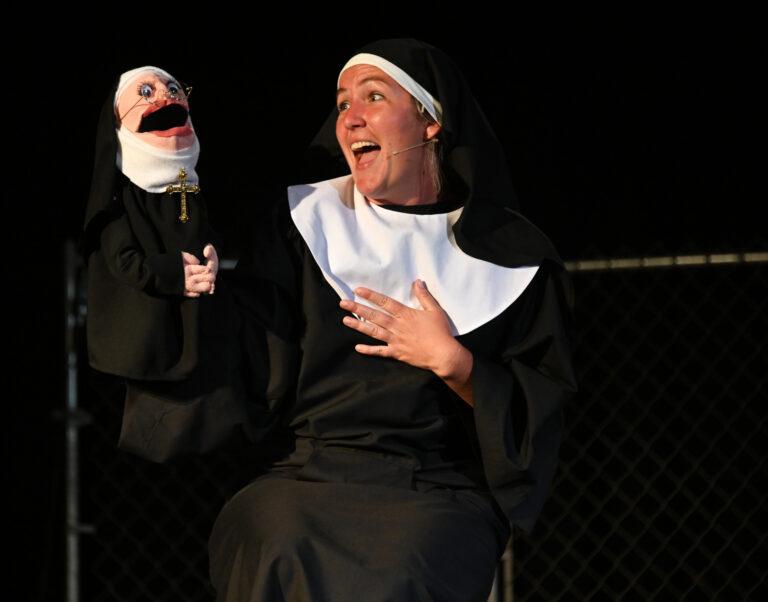Legacy Post Disclaimer
This is a #Legacy post imported from The Apalachicola Time’s previous platform. If you’re experiencing issues with this article, please email us at news@nevespublishing.com.
When I was 12 or so: Petty theft and rocket science
My original
title for this column was Garage Mechanics. I decided that might be
misleading, as Ive never been good with my hands. When I enlisted in the U.S.
Naval Air Reserve at age 20, the battery of tests included one on mechanical
aptitude. There were a lot of pictures of tools to identify and the screw-driver
was about the only one I was sure of. I scored 35. They sent me off to boot
camp anyway, outside Memphis, and then on to Jacksonville, for aviation ordnance
school. I graduated as class Honor Man – more because I was good with
book-learning than with bomb racks and 20mm aircraft cannon (though I did learn
how to disassemble and reassemble both).
When I was 4
or 5, I remember my dad (also a Richard, though his Navy buddies called him
Frenchie) parking his car under a tree and rigging a pulley to lift out the
old motor and replace it with another. He retired from the Navy as a chief petty
officer and aviation metalsmith, meaning he was as good at repairing planes as
he was with automobiles. He tried introducing me at 12 or so to the workings of
car engines; my eyes glazed over as soon as he lifted the hood of our 57
Chevy, and his heart sank I guess.
Maybe he had
high hopes, as hed built a shed onto the back of our house a couple years
before and thats where I conducted experiments with the Gilbert chemistry set
he and my mom Maggie bought me one Christmas. I invented nothing useful but did
enjoy imagining the shed as my own Frankensteins lab and heating up test tubes
on the Bunsen-burner, watching them bubble out gooey black substances.
Later my dad
saved up his money and built a garage workshop in the backyard. Life changed a
lot then. We moved the deep fryer out there, which pleased my mom, whod always
complained of the kitchen smells of fried croaker and whatever other fish wed
catch and clean. But for me the new garage was a place to concoct grand
schemes.
At one end of
our block was my elementary school, Crossroads. At the other was a gas station.
The station had one of those soda machines with a vertical glass door on the
left, about two feet high, soda-bottle width. You could see the tasty choices
one atop the other, identifiable by their caps. Insert a dime, open the door,
pull on the drink of your choice (my faves were Royal Crown Cola, Dr. Pepper,
Grapette, and Orange Crush), and out came the bottle. Problem was, in those
days, 10 cents could be a lot of money; my first weekly allowance was a
quarter, and a dime would be 40 percent of that.
So here I
confess my crime, with two variations. First a pal of mine and I figured out we
could head to the station after it closed, open the soda machine door and pull
one of the bottles as far out as it would come without inserting the dime,
maybe an inch or two. You could then pop off the cap with a bottle opener, hold
a paper cup underneath the bottles mouth, and dispense a few ounces of the
sugary treat.
But even
before that Id tried a technique that proved too labor intensive. In our newly
built garage, I found I could take a penny, tighten it into the vice on the workbench,
and hone it down with a hand-file to the size of a dime. A quick walk up the
street, drop that penny-dime into the coin slot, and voila, a soda at a 90
percent discount. Of course it took half an hour or more for the filing job,
and so I abandoned the effort about as quickly as the vending companies got rid
of those machines that could serve a kid a free half a coke so long as he had
an opener and a cup.
It was around
this time that the space race was making news. Sputnik I was launched Oct. 4,
1957, and the former Nazi aerospace engineer Wernher von Braun, recruited to
the U.S. after the war, was hard at work developing the Jupiter C rocket and
Americas first satellite, Explorer 1, to help us catch up with the Russkies.
My own interest in rocketry had already been launched watching a couple of TV
series Captain Video and His Video Rangers, which aired from 1949-1955, and
Tom CorbettSpace Cadet (1950-55).
Im pretty
sure I walked a mile or so from our house to Wards Corner on Granby Street for
12 consecutive weeks to watch the serialized, Commando Cody: Sky Marshal of
the Universe. The cliff-hanger, first released in 1951, was re-issued in 1958,
when I think I saw it at the Suburban Theaters 25¢ Saturday Kiddie Show, which
also featured cartoons, coming attractions (nowadays called trailers), the
occasional newsreel, and a full-length movie or two.
Thus inspired,
I determined to turn my dads workshop into a rocket factory. A foot-long piece
of 1-inch diameter aluminum tubing was the fuselage. I worked for hours
scraping the sulfur off the tips of several large boxes of wooden kitchen
matches — enough to fill the tube and fuel my missiles maiden journey. A
pipe-cleaner, bored into the bottom end, was its igniter. All I lacked was
something to plug the top, and one of our large lead fishing sinkers was just
the right size to fill the opening. To ensure the sinker fit snugly, I needed
only to pound it in with my dads hefty ball peen hammer.
The rest, as
they say, is history – and more than 60 years later I still have the scar on
the palm of my left hand. The lead sinker weight, blasted like a bullet from my
rocket (a pipe bomb, some might call it), was later discovered on the street in
front of our house; the aluminum fuselage which had ripped into my palm was
splayed out like a half-shucked corncob. My ears rang for hours, long after the
bandaged hand stopped bleeding. Thus ended my short-lived career as a rocket
scientist, which had lasted only about as long as my criminal stint at
siphoning RCs and counterfeiting dimes.
Rick
LaFleur, who was 12 or so in the late 1950s, is retired from four decades of
teaching Classics at the University of Georgia; his latest books are The Secret
Lives of Words, a collection of his widely distributed newspaper columns, and Ubi
Fera Sunt, a lively translation into classical Latin of Maurice Sendaks
childrens classic, Where the Wild Things Are. He and wife Alice live part of
the year in Apalachicola, under the careful watch of their French bulldog Ipsa.





Meet the Editor
David Adlerstein, The Apalachicola Times’ digital editor, started with the news outlet in January 2002 as a reporter.
Prior to then, David Adlerstein began as a newspaperman with a small Boston weekly, after graduating magna cum laude from Brandeis University in Waltham, Massachusetts. He later edited the weekly Bellville Times, and as business reporter for the daily Marion Star, both not far from his hometown of Columbus, Ohio.
In 1995, he moved to South Florida, and worked as a business reporter and editor of Medical Business newspaper. In Jan. 2002, he began with the Apalachicola Times, first as reporter and later as editor, and in Oct. 2020, also began editing the Port St. Joe Star.